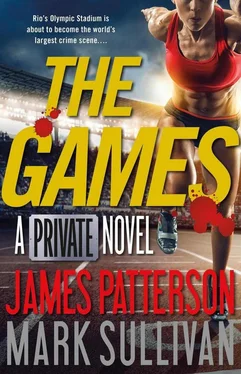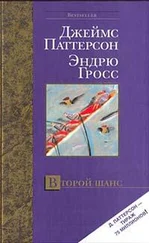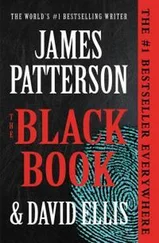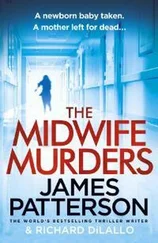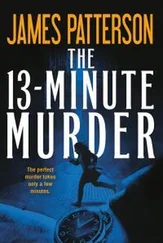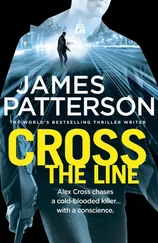James Patterson, Mark Sullivan
The Games
Rio de Janeiro
Saturday, July 12, 2014
2:00 p.m.
Christ the redeemer appeared and vanished in the last clouds clinging to jungle mountains that rose right up out of the city and the sea. Then the sun broke through for good and shone down on the giant white statue of Jesus that looked over virtually all of Rio from the summit of Corcovado Mountain.
In the prior two months, I’d seen the statue from dozens of vantage points, but never like this, from a police helicopter hovering at the figure’s eye level two hundred and fifty feet away, close enough for me to understand the immensity of the statue and its simple, graceful lines.
I am a lapsed Catholic, but I tell you, I got chills up and down my spine.
“That’s incredible,” I said as the helicopter arced away, flying over the steep, jungle-choked mountainside.
“One of the seven modern wonders of the world, Jack,” Tavia said.
“You know the other six offhand, Tavia?” I asked her.
Tavia smiled, shook her head, said, “You?”
“Not a clue.”
“You without a clue? I don’t believe it.”
“That’s because I’m unparalleled in the art of faking it.”
My name is Jack Morgan. I own Private, an international security and consulting firm with bureaus in major cities all over the world. Octavia “Tavia” Reynaldo, a tall, sturdy woman with jet-black hair, a lovely face, and beguiling eyes, ran Private Rio. And we’d always had this teasing chemistry between us.
The two of us stood in the open side door of the helicopter, harnessed and tethered to the ceiling of the hold. I hung on tight to a steel handle anyway. The pilot struck me as more than competent, but I couldn’t help feeling a little anxious as we picked up speed and headed southeast.
I used to be a helicopter pilot in the U.S. Marine Corps; I got shot down in Afghanistan and barely survived. A lot of good men died in that crash, and because of their deaths, I’m not a fan of helicopters despite the fact that they can do all sorts of things that a plane, a car, or a man on foot can’t. Let’s just say I tolerate them when the need arises, which it had that day.
Tavia and I were aboard the helicopter courtesy of Mateus da Silva, the only other person in the hold. A colonel with the Brazilian military police, da Silva was also head of all security for the FIFA World Cup and the man responsible for bringing Private in as a consultant.
The final game of the tournament — Germany versus Argentina for the soccer championship of the world — was less than a day away. So far there’d been little or no trouble at the World Cup, and we wanted to keep it that way. Which was why da Silva had asked for an aerial tour of the Marvelous City.
After two months in Rio, I agreed with the nickname. I’ve been lucky enough to travel all over the world, but there’s no place like Rio de Janeiro, and certainly no more dramatic an urban setting anywhere. The ocean, the beaches, the jungle, and the peaks appear new at every turn. That day a million hard-partying Argentine fans were said to be pouring over Brazil’s southern border, heading north to Rio.
“This will give us a sense of what Rio might look like during the Olympic Games,” da Silva said as we peered down at dozens of favelas, shantytown slums that spilled down the steep sides of almost every mountain in sight.
Below the favelas, on the flats, the buildings changed. Here, on the city’s south side where the wealthy and superrich of Rio lived, modern high-rise apartment complexes lined the sprawling lagoon and the miles and miles of gorgeous white-sand beaches along the coast.
We flew over the tenuous seam where slums met some of the world’s most expensive real estate toward two arch-shaped mountains side by side. The Dois Irmãos — the Two Brothers — are flanked by the Atlantic Ocean to the east, the ultrachic district of Leblon to the north, and a sprawling favela known as Rocinha to the west.
Once one of the most violent places in any city on earth, Rocinha was among the slums Brazilian military police tried to “pacify” in the years leading up to the World Cup. The government trained a hard-core group of elite fighters known as BOPE (from the Portuguese words for “Special Police Operations Battalion”) and declared war on the drug lords who had de facto control over the favelas. Da Silva was a commander in BOPE.
The special unit killed or drove out the narco-traffickers in dozens of slums across the city. But they’d succeeded only partially in Rocinha.
The favela’s location — spilling down both flanks of a mountain saddle — made access difficult, and the police had never gained full control. Da Silva remained nervous enough about that particular slum to demand a flyover.
We went right over David Beckham’s new place in a canyon above Leblon. The British soccer star had caused a stir when he’d bought land in a favela; some of Rio’s wealthy were indignant that he would stoop to living in a slum, and advocates for the poor worried it would start a trend and displace people who desperately needed shelter.
The helicopter climbed the north flank of the mountain, allowing us to peer into the warren of pastel shacks built right on top of each other like some bizarre Lego structure.
“You might want to stand back from the door, Jack,” Tavia said. “They’ve been known to shoot at police helicopters like this.”
Tavia was very smart, a former Rio homicide detective, and she was usually right about things that happened in her city. But da Silva didn’t move from the open doorway, so I stayed right where I was too as we flew over the top of the slum, dropped off the other side, and curved around the south end of the Two Brothers.
We stayed low to avoid the ten or fifteen hang gliders soaring on updrafts near the two mountains. To the east, the coastal highway was clogged with traffic as far as we could see. The Argentines had come in cars and buses. They hung out the windows waving blue and white flags and bottles of liquor. Bikini-clad girls danced on the hoods and roofs of the vehicles and crowded the beach on the other side of the highway.
“They’ll be coming all night,” Colonel da Silva said.
“Can the city handle it?”
“Rio gets two million visitors on New Year’s Eve,” Tavia said. “And five million during Carnival. It might not be managed flawlessly, but Rio can handle any crowd.”
Da Silva allowed himself a moment of uncertainty, then said, “I suppose, besides traffic jams, as long as the final goes off tomorrow without incident, we’re good to—”
“Colonel,” the pilot called back. “We’ve got an emergency on Pão de Açúcar. We’ve been ordered to get a visual and report.”
“What kind of emergency?” the colonel demanded.
As we picked up speed, the pilot told us, and we cringed.
I hung out the door, looking north toward Pão de Açúcar, Sugarloaf Mountain, a thirteen-hundred-foot monolith of dark granite that erupts out of the ocean beyond the north end of Copacabana Beach.
“Can people survive something like that?” Tavia shouted at me.
Even from eight miles away, I could clearly make out the sheer, unforgiving cliffs where they fell away from the peak. I thought about what we’d been told and how bad the injuries might be.
“Miracles happen every day,” I said.
In a lab at the Oswaldo Cruz Institute in Rio’s Centro District, Dr. Lucas Castro tried to steady his trembling hands as he waited impatiently for a machine to finish preparing a tissue sample for examination.
Читать дальше
